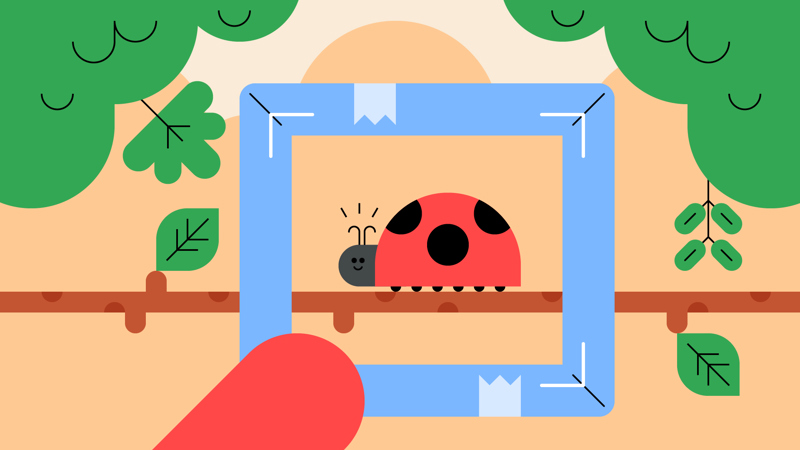
Pose for a picture
You’ll need
- Scrap paper
- Scissors
- Camera or phone
Before you begin
- You may want to make an example viewfinder, so everyone can see what they’re aiming for.
Make the viewfinders
- Everyone should take a piece of scrap paper or junk mail and fold it in half.
- Everyone should draw a rectangle from the folded end, leaving a border about three centimetres thick. Everyone should cut their rectangle out with scissors, and put it in the recycling bin.
- Everyone should open up the paper, to reveal their viewfinder.
Find the view
- The person leading the activity should help everyone think about the basic steps to taking a great photo.
- Everyone should explore using their viewfinders, framing and ‘taking pictures of’ things and people that look interesting.
- If you’re struggling to get hold of a camera or smartphone, ask parents and carers, or contact a local photography club.
The basics
- Choose what you’re going to photograph (this is called your ‘subject’) and decide if you want to take a picture of all or part of it (for example, if it’s a person, do you want to include their whole body?)
- Move the frame around until you’re happy with how it looks.
- Hold the camera steady, and press the button gently. Make sure the camera doesn’t move as you press.
- Check the picture—it’s often a good idea to take another one so you can choose which one is best.
Getting the right light
- Look at where the light’s coming from and move the frame around until you’re happy with how it looks. Try to keep the light source to the side or behind you.
- Get the right distance away from the subject. Are you close enough?
- You may need to stand, sit, or lie to find the best angle.
- Keep an eye out for interesting shapes, colours, and textures to photograph.
- You may want to use something on the foreground (at the front of the picture) to ‘frame’ it, for example, the branch of a tree, a window, or a doorway.
Taking pictures of people
- Take the picture outside if you can.
- Decide if you want to take a picture of their face (this is a portrait) or their whole body.
- Find a good background for them to stand in front of—do you want it to be busy and colourful, or would that be too distracting?
- Ask them to strike a pose and stay still while you take the photo.
- Always take another picture, just in case they closed their eyes!
Taking pictures of groups
- Ask the people to stand or sit in different positions—think about how you can fit them all in to the frame.
- Try different backgrounds. What looks best?
- People don’t always have to look straight at the camera, and they don’t need to smile. Try different poses, angles, and expressions.
- Experiment with your own ideas—if it doesn’t quite work, it’s OK. Just try again!
Reflection
This activity helped you develop skills, including photography. What was the most important thing you learned about taking a photo? What was the best way to get a great shot? Once you’ve had a think, talk about your answers with a partner. Maybe you could think about holding the camera steady, keeping the light behind you, or finding a good background. How did it feel to learn a new skill (or get better at a skill you had)?
Now you’ve worked on your photography skills, how are you going to use them? What would you like to take a picture of? Take it in turns to share your answers with a partner, or the whole group. Like any skill, the more you practice, the better you’ll get, so why not try taking that photo at home (you can ask a parent or carer to help)?
Safety
All activities must be safely managed. You must complete a thorough risk assessment and take appropriate steps to reduce risk. Use the safety checklist to help you plan and risk assess your activity. Always get approval for the activity, and have suitable supervision and an InTouch process.
- Scissors
Supervise young people appropriately when they’re using scissors. Store all sharp objects securely, out of the reach of young people.
- Phones and cameras
Make sure parents and carers are aware and have given consent for photography.
People may need some help making their viewfinders, or you could make them in advance (especially if you need to speed things up).
It’s up to you how much detail you go into about things such as lighting and taking pictures of people – you can keep it simple, or up the challenge.
Anyone who has a visual impairment can describe what they’d like to frame with their viewfinder (or photograph with the camera). Someone should help them frame or photograph, describe what they can see, and ask questions (for example: ‘at the moment the photo doesn’t show the person’s feet—should they be in the picture?’)
All Scout activities should be inclusive and accessible.
